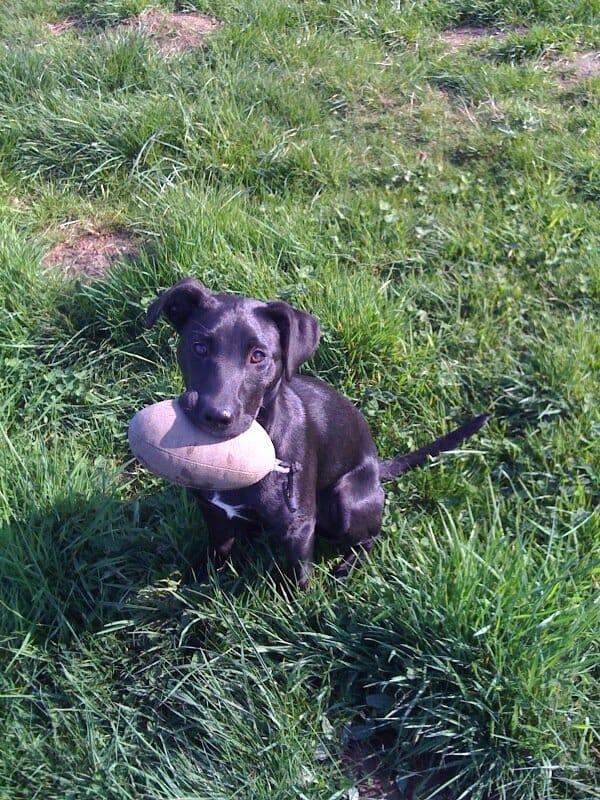When Lucas joined our household, I knew he’d make a great working dog. His dad was a steady, dependable sort who is a champion at working dog shows and used for picking up at pheasant shoots – and Lucas took immediately to retrieving. Not only do I like the idea of having him with me in the field, but I can also see just how much dogs seem to enjoy the challenges working to the gun seem to bring. But I knew it had to start somewhere, so I ordered a few training dummies that had caught my eye at a game fair last autumn. I thought these would be a better size for him, since they came as either partridges or pheasants, and I had started the pup out pretty early to work off some of his unlimited supply of energy.

When they arrived, I was surprised by the dummies themselves. They were made to a very high standard, with a pleasant shape (they fly really well off their toggles!). I’ve since discovered that they float, can take just about as much munching as Lucas can give as he stumbles up hills, and last much better than the other one I bought (which, if I recall, was actually more expensive). I was interested in why they seemed so well-thought-out, since they’re essentially just a bag on which to practice retrieving. I quickly found their weak-point, however, when the dummy landed toggle-side down on a stone: the shiny molded plastic shattered! My interest with the company, however, was further piqued when I ordered a few more, and I found the toggle to be a made of hard rubber, which bounced and gripped even better in my hands. This was iterative design, working to make an ever-increasing standard without changing the price or making a feature of general improvements. Being so impressed, I contacted the makers (the Working Dog Company) to find out their story:
Ian has been working his Labradors for a number of years. One of them had a particular problem delivering the standard type of dummy to hand. He either held it by one end like he was smoking a big cigar, or he tossed it around his head by the toggle flap. I spoke to a number of people and gun dog handlers about this problem and it seemed not to be unique to me or my dog. I could not find a dummy on the market that would help me, so I discussed the problem with my daughter who is a designer for a top country clothing retailer and supplier. We decided if we were going to start from scratch, lets change the shape to more closely resemble the shape of a game birds body. Make it softer for the dogs to hold and reduce the size of the toggle flap so that the dog would not be tempted to take hold of it. We came up with this design, offered it in 2 sizes: the Partridge to be utilised as a puppy dummy and the Pheasant to make a dog open its gape and carry as we would expect it to hold a shot bird.
When I retired after 30 years service in the Fire Brigade Jill and I decided to set up The Working Dog Company Ltd, the web site went live in August 2008 and the new dummies were launched (pardon the pun) at the Midland Game Fair in September 2008.
They have proved very popular, demand has been high and we received 2 very good reviews in the shooting press, namely BASC Nov edition magazine and Shooting Times. To view these testimonials visit our web site. We are now providing to a number of gun dog training clubs, professional handlers and shipping out to Scandinavian countries where gun dog training and handling is almost a national past time.
I really like seeing innovation in things that often go unnoticed. I can say that my little pup definitely prefers retrieving the Working Dog Company dummies. In fact, it’s difficult to make him retrieve the other if he’s allowed his preference! It’s certainly a success story so far, and I wish the WDC great luck in future.
